Raised beds give you control over the health of the soil in which you grow your plants. A raised garden is simply a bed of mounds of soil or above the surrounding level. The goal is to create a deep, wide growing area that encourages plant roots to grow up and down. It is the best method to get high-quality crops with less work and space than traditional row gardening.
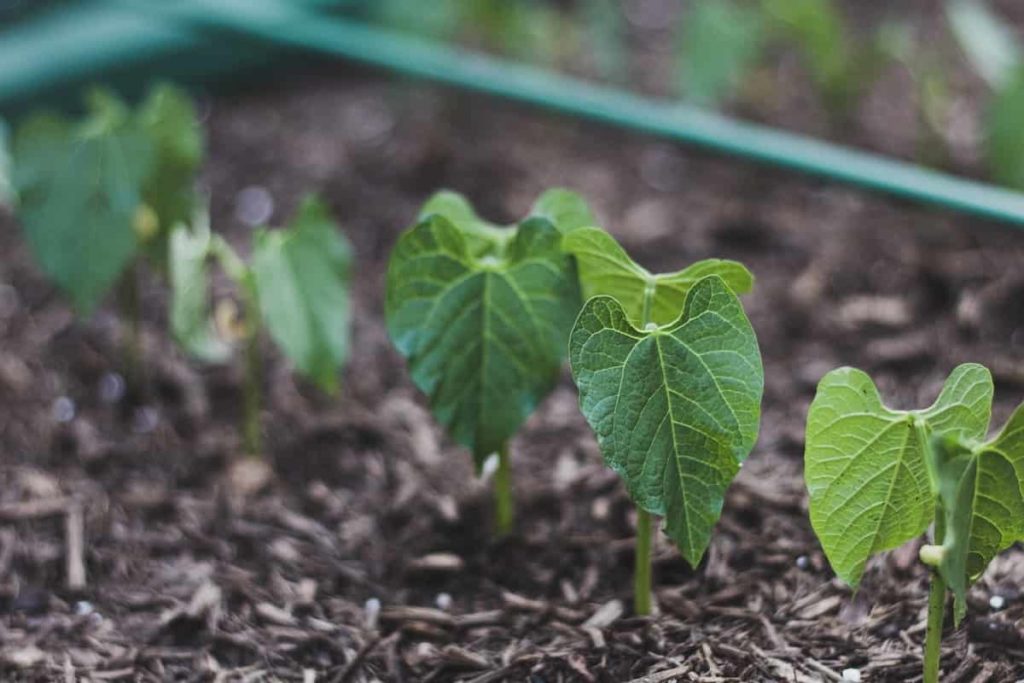
Embossed beds have the advantage of better drainage, control the soil, and often play a growing season due to the higher heat absorption. Raised beds can keep plants at eye level for better observation of pest problems. When the bed is in a structure, you can go there and work on your bed without affecting the overall shape. The below tips help you to get an organic raised garden bed. Let’s check out more information about organic raised bed gardening below.
Why raised bed gardening?
Well, growing space is limited for many people. Whether lucky enough to have a nice-sized patio or just a little sunny square, you can put it on a raised bed. And there are many benefits. A raised bed garden, especially with edible flowers and beautiful pollinator plants, is as good-looking as it is useful. When it comes to mud, raised beds let you take charge because instead of relying on it, you add what you already have. In the spring, the topsoil soil warms faster than the ground so that you can plant first. Also, they are easy to cover in case of cold.
Where do you want to keep your raised bed?
Choose a relatively level surface throughout the sun – avoid trees and bushes that reduce the amount of sunlight that reaches the plants. Even if the best place is in the middle of your backyard, don’t bother cutting or removing gravel along the way. Build a garden straight up. Cut grass/weeds as short as possible to stop grass growth, then cover the raised bed bottom with a thick layer of overlapping newspapers or cardboard sheets before adding soil.
How much sun will each bed get every day?
If you want to grow plants, ensure the bed gets 8 to 10 hours of full sun daily. Even more so. Your yield will be reduced with less than 6 hours of full sun. Crops like Tomatoes never really bear fruit. On the other hand, some crops like Lettuce appreciate some shade. Think ahead to plant the right flowers, fruits, and vegetables in the right conditions.
In case you missed it: Raised Bed Vegetable Gardening For Beginners
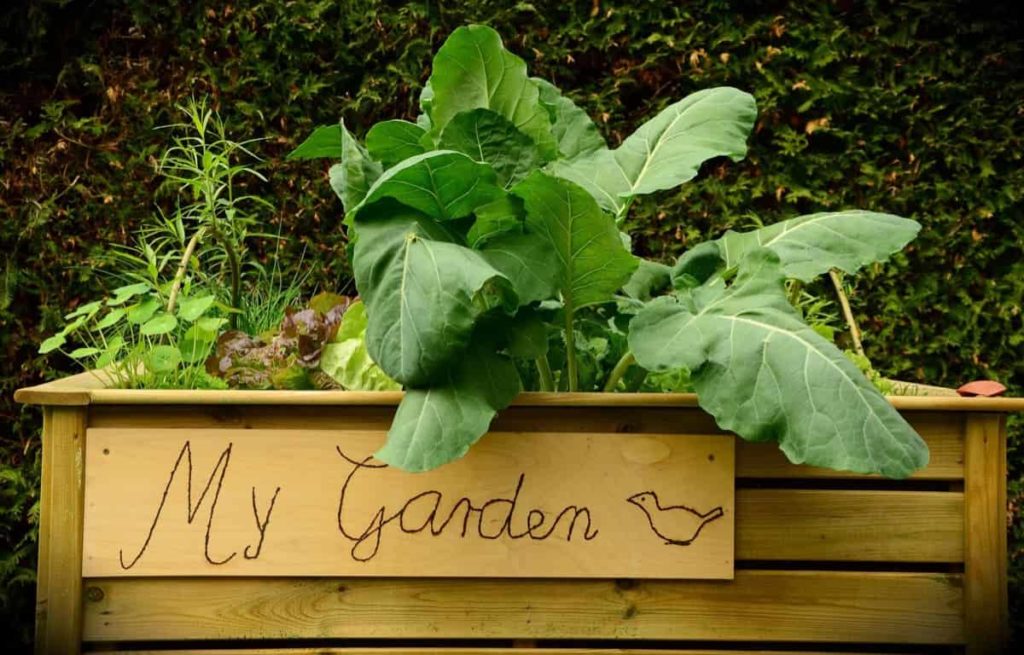
Some good options for organic raised beds
Natural stone – People have been building walls out of stone for thousands of years. They are also decorative in their way and can add to the beauty of your home landscape.
Clay Bricks – Clay bricks are another excellent option for an organic raised garden bed. However, it is better to use new materials if you cannot confirm where the bricks came from or how they were used. For example, old chimney bricks can form creosote, which can potentially cause cancer. Or bricks will be attached to toxic construction adhesives at a time, and you should also avoid using painted bricks, as chemicals from the paint can find their way into your soil.
Retaining Wall Block – Concrete retaining wall block is another option to consider with a raised garden bed. However, using concrete blocks for a raised bed can have the same effects on lime leeches as you would see using a mortar stone or brick bed. Overtime will reduce the acidity in your soil. However, concrete is easy to build with retaining wall blocks and can be stacked, moved, or added later.
Untreated wood – Depending on climate and location, wooden beds can be a good, affordable option. A standard, untreated wooden bed will likely last three to five years before the boards need to be replaced, and a raised pine or redwood bed for five to ten years, or maybe more. It can last even longer. However, the age of your boards will be significantly affected by your climate and water needs.
Galvanized steel – For reasons that are not entirely related to organic gardening, it is best to avoid the use of old rusty metal in the construction of raised beds. However, a new galvanized steel container can make a good raised bed. Metal beds do not come out as easily as dry stone or wooden beds, and in very acidic conditions, a small amount of zinc coating from steel can leak into your soil. It should not be a concern, as small amounts of zinc are already naturally found in the soil.
Use the floating row covers
The floating row cover is a lightweight fleece that can either lie on top of plants or be used in conjunction with small tunnel-like hoops. It will create a microclimate that will extend the seasons, protect from the cold and keep the soil warm. It also protects plants from insects such as carrot flies or cabbage butterflies. It also protects young plants from being scratched by birds, which works much better with crops such as carrots. Wool helps to establish newly planted vegetables and seedlings.
In case you missed it: Commercial Raised Bed Farming – A Full Guide
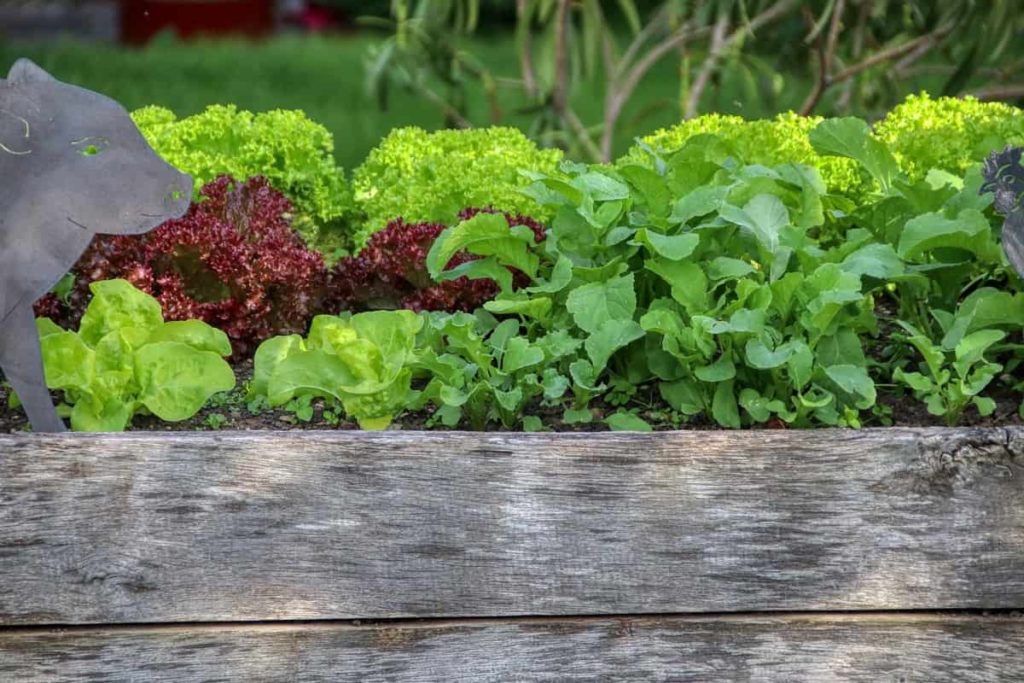
Organic soil for raised bed gardening
You can decide to fill your raised garden bed with purchased soil, compost and amendments. Most gardeners use their existing soil in high beds, adding organic amendments such as compost and organic fertilizer if needed. One step often missed is testing the soil to determine the basics of the existing soil. Soil composition, soil acidity, nutrient deficiency or abundance, and soil contamination, such as lead and heavy metals, can be determined by soil tests.
The soil is rich, rich in nutrients, and biologically active! In contrast, dirt is usually free of all these things. As the soil food network expands, the soil improves with time and age. It is a living, breathing, dynamic ecosystem. So, the goal is not just to fill our raised beds with soil but to create an excellent living organic bed soil that plants love.
Making a good mix of soil for raised beds
As with any garden soil, the material is critical. Any soil you use that is not your own (or purchased) organic fertilizer must be of high quality. Use a standard loom mixed in equal parts with well-rounded clay if mixing. Another soil alternative is mixing equal amounts of topsoil and cow or horse manure. If the soil is very compact, add sand. Make sure the manure is free of herbs, and never use manure from dairies or operations where animals are regularly confined. It has high salinity and disease content.
Never dig the soil – Digging Garden soil destroys soil food nets (all beneficial bacteria, fungi, and soil microcosm creatures) and soil structure. It puts your plants at higher risk for disease because they depend on the healthy microbiology of the soil.
Use soil amendments in raised beds
To improve the soil quality in the raised beds, soil amendments are mixed with the soil. In particular, what soil amendments do to the soil will depend on the type of soil amendments you use. You may consider using soil amendments to increase soil nutrients or change the soil’s physical structure, often called a field. Simply put, it is a clay structure. For example, the soil in your bed is drying up too fast. Or, you may not have used the right soil mixture in the first place.
There was probably a lot of sand in your soil, which caused the water to flow rapidly into the soil before the plants could absorb it. You can improve the soil by amending the soil, such as fertilizer rich in organic matter. Organic matter will retain soil moisture. Here is a list of organic soil amendments you want to see to improve the quality of your raised bed soil: vermiculite, worm castings, compost, coir, green sand, alfalfa meal, lava sand, grass clippings, corn meal, straw and kelp meal.
In case you missed it: Soil Preparation In Agriculture, Methods, And Tips
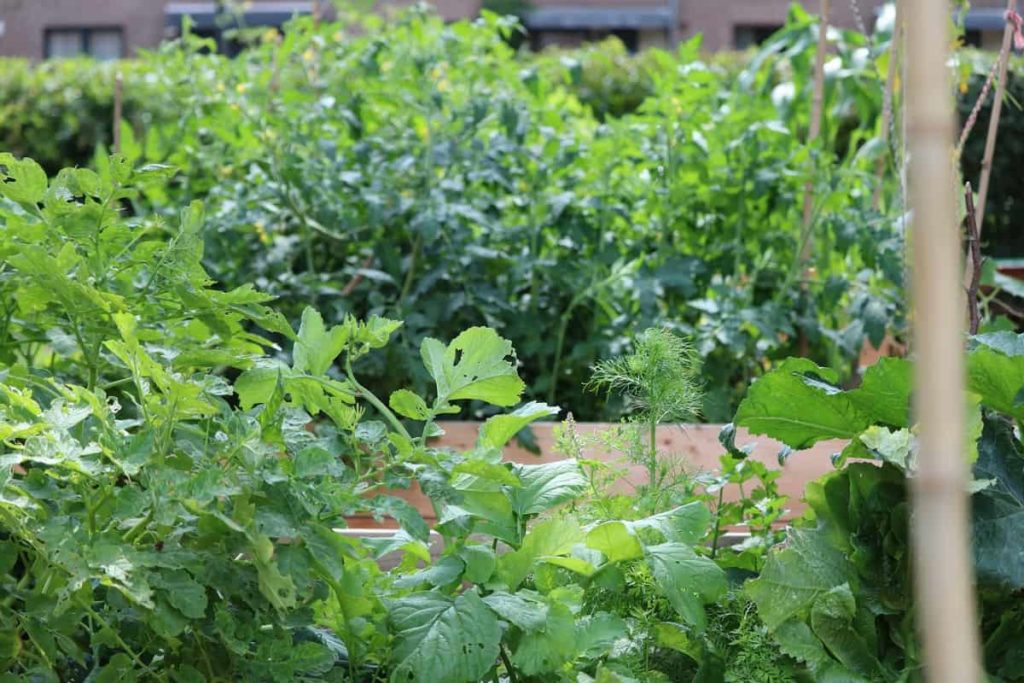
Choosing a raised bed
For gardening, a wide range of beds are available, from aluminum corner kits to the ones you provide your wood for, complete raised bed kits in cedar, composite wood, recycled plastic, and galvanized steel. ۔ You can also consider raised beds for gardening without a bend.
Generally, the more soil depth available to your plants, the more freely their roots will grow. More soil also has more moisture, so a deep, high bed will require less watering. If this is the case for you, buy the deepest bed you can afford. A depth of 10-12 inches is preferable. Remember that the deeper the bed, the more clay you need to fill it.
Organic vegetable gardening in raised beds
Keeping fruits and vegetables free from contaminants is an important reason for organic gardening, so when designing raised vegetable garden beds, you need to consider the depth of the root that you will plant needs to be considered. This depth determines the height of the frame.
Many vegetables have shallow roots 12 to 18 inches long, including Arugula, Broccoli, Cauliflower, Endive, Garlic, Onions, Potatoes, Bok Choy, Lettuce, and Spinach. On the other hand, some vegetables such as Asparagus, Lima Beans, Okra, Parsnips, Pumpkins, Winter Squash, Tomatoes, and Watermelons live 2 to 3 feet above the earth.
Knowing the root length guides the height of the future garden. Since there is no barrier at the bottom of the upper bed, deep-rooted vegetables can outgrow organic soils in your existing soil, where they are in a position to absorb potential contaminants and lose their organic status. If the soil underground is contaminated with toxic substances, ensure that the raised bed is long enough to keep the roots happy in the organic soil.
Vegetables that can be sown directly from seeds in the garden include root crops, such as carrots and Beets, Beans, Peas, Corn, Cucumbers, Squash, and Salad Vegetables. In some cases, these crops are sown directly because they do not transplant well, and it is best to sow where they are supposed to grow. In the case of salad greens, which grow well and grow fast, buying a packet of seeds is more economical than buying more than six packs of Lettuce seedlings.
Fertilizers for organic raised bed gardening
Many excellent organic fertilizers are made specifically for your vegetable garden. Organic fertilizers can be granular, such as Tomato, Vegetable, Herb Fertilizers, or Liquids, such as Fish and Kelp fertilizers. Liquid fertilizer can be added to the soil when planting and every two months for established plants. If you fertilize your vegetable garden soil regularly, you will not need to fertilize anymore. Spread a ½-inch layer of compost on the soil after each crop is completed.
In case you missed it: Top 40 Ways to Increase Crop Yield/Production: For Vegetables, Fruits, Flowers, Herbs, Tips, Ideas, and Techniques
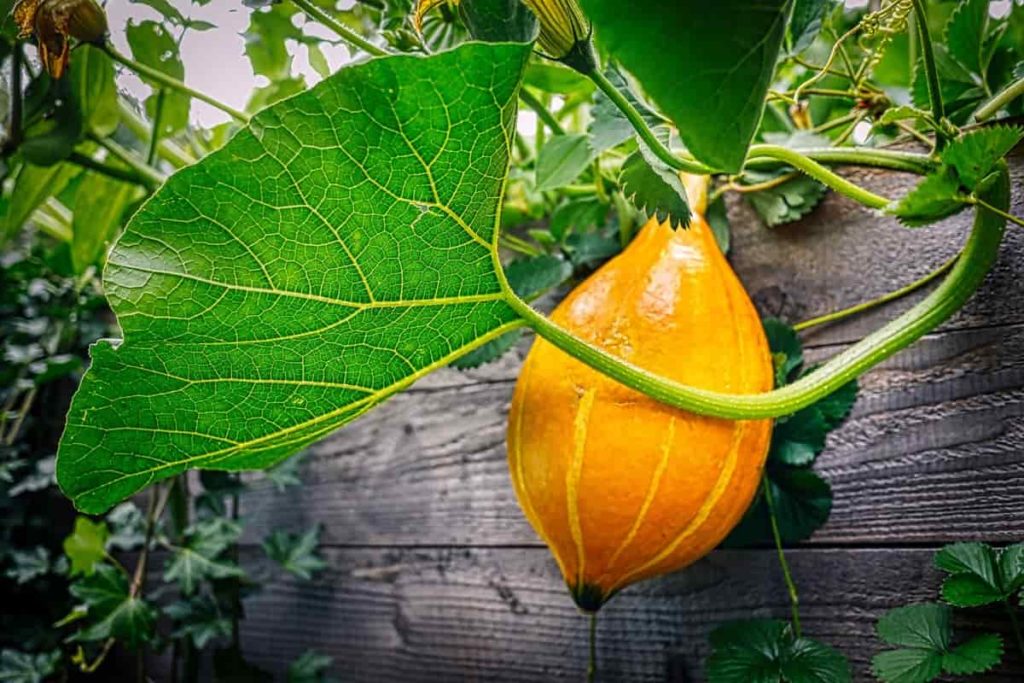
The best soil in the raised bed contains nutrients that stimulate growth. Organic, natural fertilizers include compost, seaweed, and worm casting. These fertilizers improve the quality and condition of the soil without you having to worry about contamination. The slow-release properties of organic fertilizers prevent potentially harmful accumulation and ensure that your plants are not damaged by a flood of nutrients at the same time.
Watering raised bed garden plants
Unlike row or similar gardening forms in the ground, raised beds always have the best drainage. They are similar to containers in that they can hold water more efficiently and allow you to use your water more cheaply. The best way to water the raised beds is with an early morning soaker hose or a simple flood irrigation system that sits on the garden soil.
Some gardeners make their raised beds at a slight inclination and install PVC or other piping systems with holes drilled to fit the garden hose to one end. It allows water to flow evenly along the length of the pipe, flooding the garden with soil.
Watering directly on the ground prevents many types of rot and disease that grow on the leaves and stems of plants when watered from above. Soaker hoses and drip irrigation are the best ways to irrigate a bed.
Insect control for raised bed garden plants
Pests are a reality in any raised bed garden. Keep raised garden bed organic while minimizing plant damage by being attracted to natural pests: beneficial insects like lacewings, lady beetles, and predatory wasps. Attract them by using companion plants in and around your raised beds. Dill, Fennel, Coriander, Golden Alexanders, Yarrow, Sunflower, and Goldenrods are some of the best options.
Companion plants also protect produce by entangling insects that come to eat in the garden. If you separate rows of Broccoli, Cabbage, or Tomatoes from rows of Onions, the latter’s strong scene baffles hungry insects and caterpillars. Leeks repel carrot flies.
Here are some additional control methods that do not adversely affect the environment.
Traps: Control whiteflies, aphids, thrips, and leaf hoppers by using shiny yellow sticky nets. Pitfall traps trap slugs.
In case you missed it: Crop Pest and Disease Management – a Full Guide
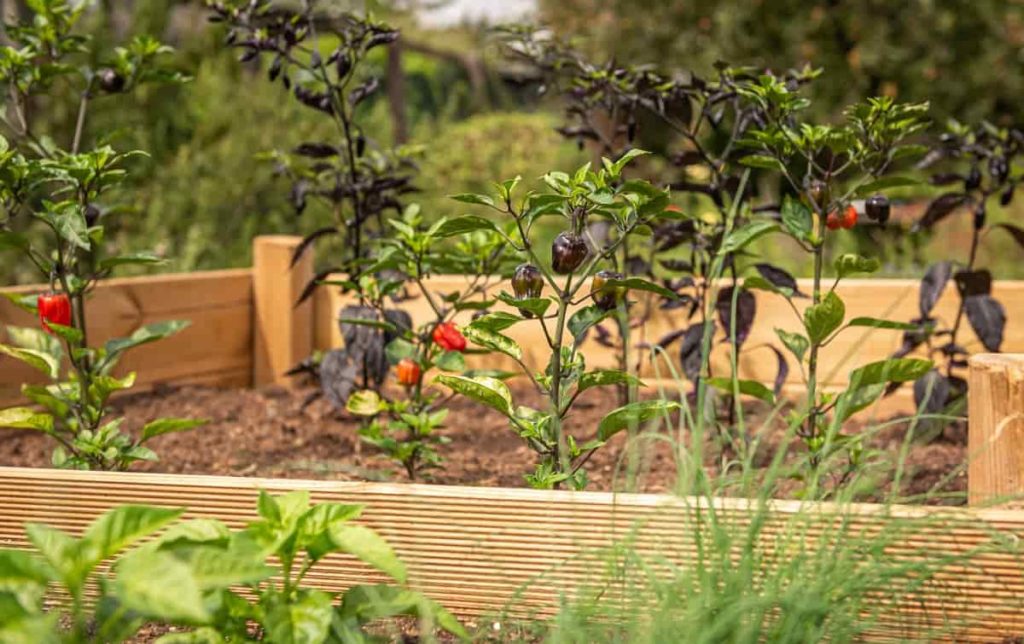
Barriers: Cardboard and metal collar cuts prevent insects from reaching young plants. Crushed egg shells prevent slugs. Screens provide a physical barrier against insects. Individual cloches and ring tunnels covered in fine mesh prevent flying insects.
Water: Spider mites and wash aphids and other small insects from the leaves with a jet of water.
Elbow grease: Handpick horn worms from tomato plants and put them in a bucket of water.
Insecticides kill soft-bodied insects such as aphids, thrips, crawler stage scale insects, whiteflies, leafhoppers, and mites.
Botanical insecticides quickly stop the insects from feeding, although the insects cannot die for several days. Although considered organic, this pesticide can harm beneficial garden pests.
There are many ways to control organic pests and diseases. What you use will mainly depend on what you’re battling, how much area you have to cover, and your preferences. Dish soap sprays, coffee grinds, apple cider vinegar, and many other methods are used to keep pests away. Another common method is to grow insect repellent plants in pots around the bed or directly in the ground adjacent to the bed.
Conclusion
Raised beds make organic gardening much easier. You have more control over important plant health factors such as soil health, weed control, and drainage. The soil in the raised beds is very loose because you never walk on it, making it much easier to find nutrients for plant roots. Follow these above essential tips for organic raised bed gardening, and you will grow healthy and nutritious crops anytime.
- Economical Aquaculture: A Guide to Low-Budget Fish Farming
- 15 Common Planting Errors That Can Doom Your Fruit Trees
- How to Make Houseplants Bushy: Effective Tips and Ideas
- Innovative Strategies for Boosting Coconut Pollination and Yield
- Pollination Strategies for Maximum Pumpkin Yield
- The Complete Guide to Chicken Fattening: Strategies for Maximum Growth
- Natural Solutions for Tulip Problems: 100% Effective Remedies for Leaf and Bulb-Related Issues
- Revolutionizing Citrus Preservation: Towards a Healthier, Greener Future
- Natural Solutions for Peony Leaf and Flower Problems: 100% Effective Remedies
- Maximizing Profits with Avocado Contract Farming in India: A Comprehensive Guide
- Natural Solutions for Hydrangea Problems: 100% Effective Remedies for Leaf and Flowers
- The Ultimate Guide to Choosing the Perfect Foliage Friend: Bringing Life Indoors
- From Sunlight to Sustainability: 15 Ways to Use Solar Technology in Agriculture
- The Ultimate Guide to Dong Tao Chicken: Exploring from History to Raising
- The Eco-Friendly Makeover: How to Convert Your Unused Swimming Pool into a Fish Pond
- Mastering the Art of Delaware Chicken Farming: Essentials for Healthy Backyard Flocks
- 20 Best Homemade Fertilizers for Money Plant: DIY Recipes and Application Methods
- How to Craft a Comprehensive Free-Range Chicken Farming Business Plan
- Brighten Your Flock: Raising Easter Egger Chickens for Beauty and Bounty
- How to Optimize Your Poultry Egg Farm Business Plan with These Strategies
- Subsidy for Spirulina Cultivation: How Indian Government Schemes Encouraging Spirulina Farmers
- Ultimate Guide to Raising Dominique Chickens: Breeding, Feeding, Egg-Production, and Care
- Mastering the Art of Raising Jersey Giant Chickens: Care, Feeding, and More
- Ultimate Guide to Raising Legbar Chickens: Breeding, Farming Practices, Diet, Egg-Production
- How to Raise Welsummer Chickens: A Comprehensive Guide for Beginners
- How to Protect Indoor Plants in Winter: A Comprehensive Guide
- Ultimate Guide to Grow Bag Gardening: Tips, Tricks, and Planting Ideas for Urban Gardeners
- Guide to Lotus Cultivation: How to Propagate, Plant, Grow, Care, Cost, and Profit
- Agriculture Drone Subsidy Scheme: Government Kisan Subsidy, License, and How to Apply Online
- Ultimate Guide to Raising Araucana Chickens: Breed Profile, Farming Economics, Diet, and Care
- Bringing Hydroponics to Classroom: Importance, Benefits of Learning for School Students
- Ultimate Guide to Raising Polish Chickens: Breed Profile, Farming Economics, Diet, and Care
- Ultimate Guide to Raising Australorp Chickens: Profile, Farming Economics, Egg Production, Diet, and Care
- Silkie Chicken Farming: Raising Practices, Varieties, Egg Production, Diet, and Care
- Sussex Chicken Farming: Raising Practices, Varieties, Egg Production, Diet and Care
- Homemade Feed Formulations for Livestock: Discover Cost-effective Starter to Finisher Feed Recipes
A very relevant information that will provide guidance to upcoming farmers.